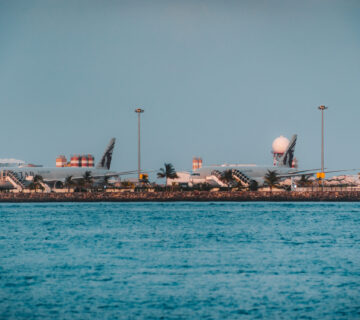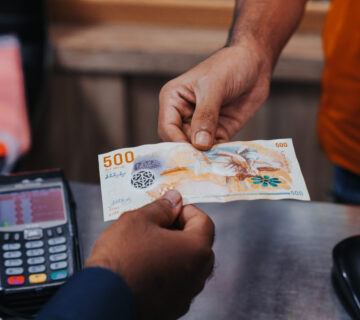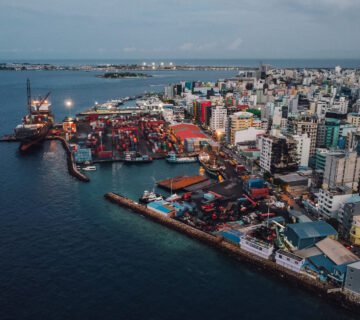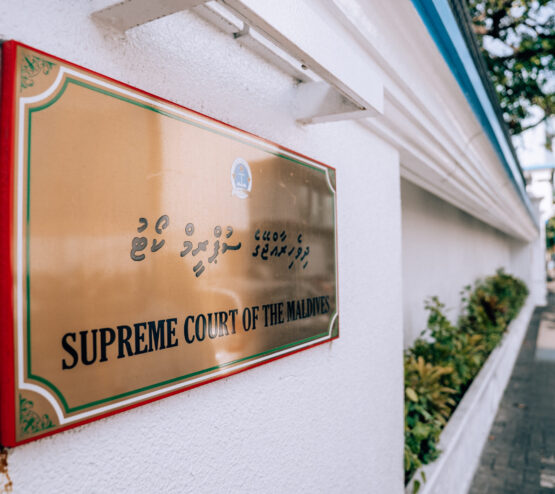The Maldives offers vast opportunities for local and foreign institutional investors and individual investors. The lucrative tourism sector offers several opportunities, with the government’s ambitious target to bring 35,000 new beds in the market over the next five years. There is enormous untapped potential in the area of renewable energy with the increased Government target to increase from 30% to 70% of peak load energy to be generated from renewable sources and due to the geographical composition of the country and challenges faced in power generation. Moreover, there is a substantial need for investment in infrastructure projects with long-term productive life which will contribute to sustainable community development. Other sectors with immense promise for the future include investments in IT start-ups and SME development, with a young tech-savvy millennial population ready to develop their own businesses and promising start-ups in need of venture capital.
Overview

About Maldives
The Maldives is a small island nation strategically located in the Indian Ocean, made up of 1192 small islands with white sandy beaches and surrounded by crystal clear lagoons and dazzling turquoise waters. The country maintains a reputation as “the sunny side of life”, famous for its stunning natural beauty and year-round tropical warm climate. While the local population of approximately 350,000 is scattered across 187 inhabited islands, the country is administered over 20 administrative atolls. There is high concentration in the capital city Male’, which is the center of politics and business. Over 145 islands have been developed as ‘one-island one-resort’ tourism establishments, while a further 560 hotels / guesthouses and 153 safari vessels make up a total of over 47 thousand tourist beds in operation, making tourism the most significant driver of the Maldivian economy. The population is homogenous, speaking one language and practicing one religion. In addition to the local language, English is widely spoken and is the main medium of instruction in schools and the primary medium of communication in business.

Why invest in Maldives
The Maldives is a small island nation strategically located in the Indian Ocean, made up of 1192 small islands with white sandy beaches and surrounded by crystal clear lagoons and dazzling turquoise waters. The country maintains a reputation as “the sunny side of life”, famous for its stunning natural beauty and year-round tropical warm climate. While the local population of approximately 350,000 is scattered across 187 inhabited islands, the country is administered over 20 administrative atolls. There is high concentration in the capital city Male’, which is the center of politics and business. Over 145 islands have been developed as ‘one-island one-resort’ tourism establishments, while a further 560 hotels / guesthouses and 153 safari vessels make up a total of over 47 thousand tourist beds in operation, making tourism the most significant driver of the Maldivian economy. The population is homogenous, speaking one language and practicing one religion. In addition to the local language, English is widely spoken and is the main medium of instruction in schools and the primary medium of communication in business.

Transport
In addition to the main port of entry through Velana Airport International Airport at Hulhule’, there are three additional international airports in the Maldives. These include Hanimaadhoo International Airport in the north and Gan International Airport at the south-most Addu Atoll. An additional international airport is currently being developed in the island of Maafaru in Noonu atoll and is expected to be operational by the end of 2019. Furthermore, the international air transport network is supplemented by 8 domestic airports in the Maldives, with 6 more currently under development and scheduled to be open by 2020. There are also 2 seaplane operators in the country, including one which boasts the world’s largest seaplane fleet, with 2 more operators expected to join the ranks during 2019. The projected growth in the transport network is expected to provide a significant impetus to the economy through increased connectivity for tourism, trade and commerce. Visitors can also rely on a sea transport network, including ferries and speedboats that connect islands

Financial Sector
The banking sector in the Maldives is comprised of 8 major banks, with several non-depository institutions offering housing finance leasing, insurance, and leasing services. The government has recently established the government-backed SME Development Finance Corporation, which marks a new venture in improving access to credit for small businesses and stimulating economic growth.
The Weighted Average Interest Rate (WAIR) for local currency loans and advances stood at comparatively high rate of 11.47 % for the private sector, while WAIR for foreign currency loans stood at 8.82%. The high rate of interests is a significant deterrent to investing in otherwise profitable business opportunities, with the country displaying strong demand for credit amidst continuous economic growth and stability.

The Economy
The Maldives real GDP growth rate was at 6.1% in 2018. Tourism contributes highest to the country’s USD 4.6 billion Gross Domestic Product, followed by wholesale and retail trade; construction, real estate, transportation and communication. Inflation has remained subdued over the past few years due to low commodity prices in global markets, with the figure at 1.4% for the year 2018.
As an emerging economy, Maldives offers an attracting climate for investment, as evident by a stable Moody’s rating of B2 and Fitch rating of B+ assigned to the Government of Maldives.

Tourism in the Maldives
While the Maldives currently welcomes 1.5 million tourists per year, this figure is set to drastically increase following the Velana International Airport expansion project which is scheduled to conclude by 2022. Traditionally the growth in the tourism sector has been concentrated in the central region of the country. This is in part due to the reliance on various services, such as transport, communication, banking and trade within the central region. The main airport of the Maldives—Velana International Airport—is also located adjacent to the capital city Male’. As a result, over 75% of existing tourism bed capacity in the country is based within this region which comprises five administrative atolls.
With the development of regional airports across atolls, as well as the government’s initiative to improve sea transport networks, there is massive potential for expansion of tourism, both resorts and local tourism to the outer islands and atolls.
The Maldives has benefited from continuous growth in tourist arrivals, welcoming 1.5 million tourists in year 2018. The country experiences high occupancy rates from September till April, with a bit lower rates from May till August. The average occupancy rates for tourist resorts has been at 77% over a 5-year period from 2013-2017, with average duration of stay of tourists at 6.4 days at the end of 2018. The country also displays one of the world’s highest Average Daily Rate (ADR) and Revenue Per Available Room (RevPAR) among luxury tourism destinations.

Legal / Regulatory
The new Constitution adopted in 2008 paved way for vast reforms in the country’s legal and regulatory framework, by specifying the fundamental principles for functioning of separated powers for the executive, legislative and judicial branches of the state. The country makes use of a common law system, with the courts having leeway to interpret and apply law, which is a complex mixture of Shariah and English Common Law.
Taking in to account the importance of Foreign Direct Investments in the country’s economic development, the Maldives has a liberal and open economy which is welcoming to foreign investors.
There is relative relaxed approach to financial sector regulation, there are no capital controls, offering investors room for flexibility with regard to transfer of assets, and financial institutions are subject to prudential regulations that has led to relatively low Non- Performing Loan ratios as a result of better recognition of poor-quality assets.
Recent reforms such as the establishment of Arbitration Center, and the establishment of the Credit Information Bureau, has led to better recoverability of assets, and has reduced previously lengthy recovery efforts. There are also several approaches that potential investors can approach to engaging in business in the Maldives. These include, in addition to the normal investment regime, such as Special Economic Zones (SEZ) and Unsolicited Proposal Policy (USP Policy).
